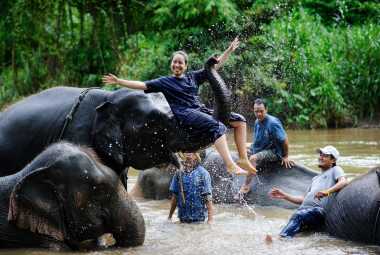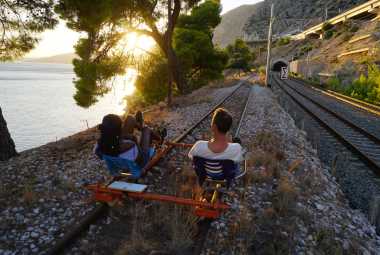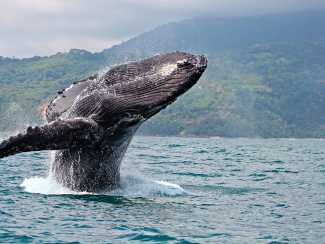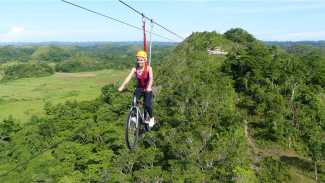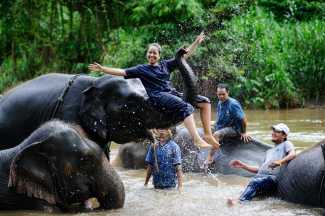Image by adventureparkcostarica.com
*Vacation Mode is a for-profit site. It contains paid banner advertisements that are generated and managed by a third-party network. This site also includes relevant affiliate links (both in the content and on the sidebar) all of which we do our best to clearly mark as such.
Are you planning a ziplining adventure in Costa Rica but concerned about weight limits? Well, worry no more because this article is here to clear your doubts! From safety regulations to weight restrictions, we've got all the information you need to ensure a safe and enjoyable ziplining experience. So, let's dive in and discover everything you need to know about Costa Rica's zipline weight limits.
What Is Ziplining in Costa Rica?
Ziplining in Costa Rica is an exhilarating adventure activity that involves gliding through the treetops on a suspended cable. It offers breathtaking views of the rainforest and provides an adrenaline rush. Ziplines in Costa Rica are designed to give participants an immersive experience in the lush surroundings. It is a popular tourist attraction and a unique way to explore the country's natural beauty.
Ziplining in Costa Rica allows visitors to experience the thrill of soaring through the air while marveling at the incredible landscapes. It is an exciting and unforgettable adventure that shouldn't be missed during a trip to Costa Rica.
Zipline in Costa Rica, Arenal Park
Video by Delia Batinas
How Does Ziplining Work?
Ziplining is an exciting adventure activity that involves gliding through the air on a cable suspended between two points. Here are the steps involved in ziplining:
- Gear up: Put on a helmet, harness, and any other safety equipment provided.
- Instruction: Listen carefully to the guide's safety briefing and demonstration.
- Attach: Securely attach yourself to the zipline using the harness and clips.
- Launch: Step off the platform or take off from a higher point to start your zipline journey.
- Glide: Enjoy the exhilarating sensation of flying through the air as you zip along the cable.
- Landing: Approach the landing platform and follow the guide's instructions to safely decelerate and stop.
- Unhook: Detach yourself from the zipline and return any gear provided.
Suggestions:
- If you're new to ziplining, start with shorter and lower lines to build confidence.
- Always follow the instructions and safety guidelines provided by the zipline operators.
- Choose a reputable zipline tour operator that prioritizes safety and has well-maintained equipment.
Wondering how ziplining works? It's a thrilling adventure where you glide through the air on a suspended cable between two points.
What Is the Weight Limit for Ziplining in Costa Rica?
When planning to go ziplining in Costa Rica, it's important to be aware of the weight limit restrictions. Most zipline tours in Costa Rica have a weight limit ranging from 275 to 300 pounds (125 to 136 kilograms) to ensure the safety of participants and the durability of the zipline equipment. It's essential to confirm the specific zipline tour operator's weight limit before booking. Remember, adhering to weight limits is crucial for a safe and enjoyable ziplining experience in Costa Rica. So, have fun exploring the exhilarating ziplines the country has to offer!
What Factors Determine the Weight Limit for Ziplining?
The weight limit for ziplining in Costa Rica is determined by various factors, including the strength of the zipline cables, the design and construction of the platforms, and the safety equipment used. The topography and weather conditions of the location can also impact the weight limit. Zipline operators conduct thorough assessments and tests to establish the maximum weight capacity for each zipline. It is crucial to follow weight restrictions to ensure a safe and enjoyable ziplining experience.
To prepare for ziplining, individuals should check the weight limit beforehand and follow any guidelines provided by the zipline operator.
What Are the Safety Measures for Ziplining in Costa Rica?
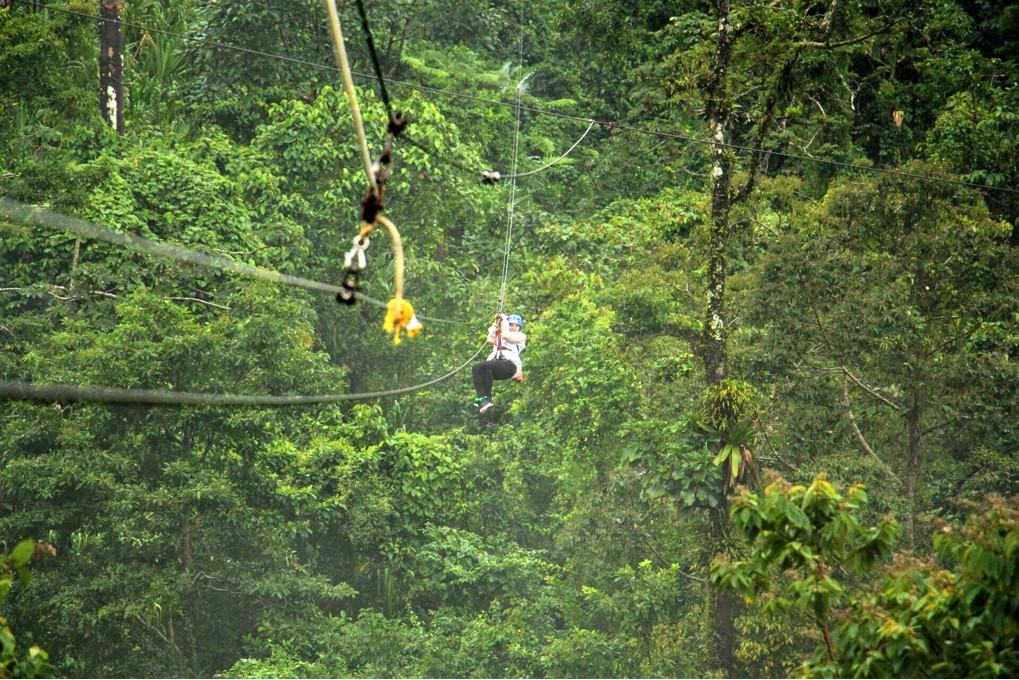
Ziplining in Costa Rica is an exhilarating adventure, but safety should be a top priority. To ensure a safe experience, it is important to follow these safety measures:
- Age and weight restrictions: Most ziplining operators have age and weight limits in place to ensure the equipment can handle the load and minimize risks.
- Safety equipment: It is crucial to always wear the provided safety gear, including helmets and harnesses, and ensure they are properly fitted and secured.
- Trained guides: It is recommended to choose a reputable ziplining company with trained guides who can provide instruction on proper techniques and ensure your safety throughout the activity.
- Inspections and maintenance: Companies should regularly inspect and maintain their ziplining equipment to ensure it is in good working condition.
By adhering to these safety measures, you can have a thrilling and safe ziplining experience in Costa Rica.
What Equipment is Used for Ziplining?
Ziplining in Costa Rica requires specific equipment to ensure safety and enjoyment. The essential equipment used for ziplining includes:
- A harness, worn around the waist and legs, providing support and stability.
- A helmet, protecting the head from potential hazards.
- A trolley, allowing participants to glide along the zipline.
- A braking system, ensuring controlled speed and a safe landing.
These equipment pieces are carefully inspected and maintained to ensure the safety of zipliners in Costa Rica and provide an unforgettable experience.
The concept of ziplining originated from the need for efficient transportation in mountainous regions. Indigenous people in these regions would use ziplines as a means of crossing deep gorges and canyons. Today, ziplining has evolved into a popular recreational activity, allowing people to experience the thrill of flying through the air while enjoying breathtaking natural landscapes.
Are There Any Age Restrictions for Ziplining?
Ziplining in Costa Rica has age restrictions in place to prioritize the safety of all participants. Generally, zipline operators require a minimum age of 7 or 8 years old. However, this age limit may vary depending on the specific zipline course and operator. It is crucial to check with the operator beforehand to confirm any age restrictions. This helps to ensure that all participants possess the necessary physical strength and coordination for a secure ziplining experience.
Additionally, younger participants may be required to ride with a guardian or participate in a separate zipline course designed for kids.
What Are the Benefits of Ziplining in Costa Rica?
Ziplining in Costa Rica is a popular activity for tourists seeking an adrenaline rush and a unique way to experience the country's lush rainforests. But beyond the excitement, there are numerous benefits to ziplining that make it a must-try activity. In this section, we'll discuss the three main benefits of ziplining in Costa Rica: the exhilarating feeling of flying through the air, the unparalleled views of the rainforest, and the personal growth and empowerment that comes with conquering fears. So buckle up and get ready to explore the amazing benefits of ziplining in Costa Rica!
1. Experience the Thrill of Flying
- Strap into a safety harness and helmet provided by the zipline operator.
- Listen carefully to the safety instructions given by the guides.
- Step off the platform and feel the rush as you soar through the air.
- Enjoy the sensation of flying as you glide along the zipline.
- Take in the breathtaking views of the rainforest and surrounding scenery.
- Feel the adrenaline pumping as you zip from one platform to another.
- Experience the thrill of flying and a sense of freedom and exhilaration as you navigate through the treetops.
Ziplining in Costa Rica offers an incredible opportunity to experience the thrill of flying. So if you're looking for an adventure that will get your heart racing and provide unforgettable memories, don't miss the chance to go ziplining in this beautiful country!
2. Get a Unique View of the Rainforest
Experiencing ziplining in Costa Rica offers a unique opportunity to witness the beauty of the rainforest from a different perspective. Here are some steps to follow to fully enjoy this experience:
- Choose a reputable zipline tour operator that offers tours in the Costa Rican rainforest.
- Arrive at the designated meeting point and get briefed on safety protocols and instructions.
- Get geared up with the necessary equipment, including a harness, helmet, and gloves.
- Embark on the ziplining adventure, gliding through the treetops and enjoying breathtaking views of the rainforest.
- Listen to the guide who will provide interesting information about the flora, fauna, and ecosystem of the rainforest.
- Take in the sights, sounds, and smells of the rainforest as you zip from one platform to another.
- Capture the unique views of the rainforest by bringing a camera or using a GoPro to document your experience.
- Follow all safety guidelines and instructions provided by the guide to ensure a safe and enjoyable ziplining experience and get a unique view of the rainforest.
3. Challenge Yourself and Overcome Fears
To challenge yourself and overcome fears while ziplining in Costa Rica, follow these steps:
- Prepare mentally: Acknowledge your fears and commit to facing them.
- Research and choose a reputable zipline tour operator with a strong safety record.
- Listen attentively to the safety instructions provided by the guides.
- Start with shorter and lower ziplines to gradually build confidence.
- Focus on your breathing and stay present in the moment to manage anxiety.
- Visualize a successful and enjoyable ziplining experience.
- Encourage and support fellow participants to create a positive and empowering atmosphere.
- Challenge yourself to try new ziplining techniques or obstacles.
- Reflect on your accomplishments after completing each zipline to boost self-confidence.
What Are the Risks of Ziplining in Costa Rica?
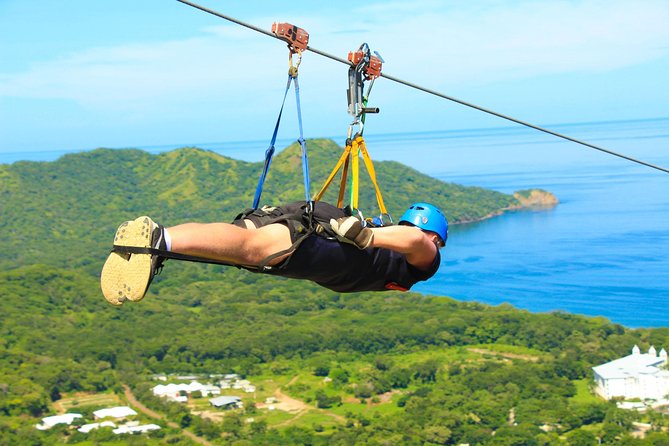
Ziplining in Costa Rica is a thrilling and popular activity for tourists, but it is important to be aware of the potential risks involved. In this section, we will discuss the various risks associated with ziplining in Costa Rica and how to mitigate them. First, we will address the potential for injury and what safety precautions should be taken. Then, we will explore the impact of weather conditions on ziplining and how to ensure a safe and enjoyable experience.
1. Potential for Injury
While ziplining in Costa Rica can be an exhilarating experience, it is crucial to be aware of the potential for injury and take necessary precautions to minimize risks.
- Listen carefully to the safety instructions provided by the zipline operators.
- Ensure that you are wearing appropriate safety gear, including a helmet and harness.
- Double-check that the zipline equipment is in good condition before starting.
- Pay attention to weight limits and restrictions set by the zipline company to prevent accidents.
- Follow the rules and guidelines provided by the operators to ensure a safe and enjoyable experience.
One true story that highlights the importance of safety is the case of a tourist who disregarded the weight limit and attempted to zipline. As a result, the zipline cable snapped, causing the individual to fall and sustain severe injuries. This incident serves as a reminder of the potential consequences of not adhering to safety guidelines.
2. Weather Conditions
Weather conditions play a crucial role in ensuring a safe and enjoyable ziplining experience in Costa Rica. To make the most of your adventure, it's important to follow these steps:
- Check the weather forecast before embarking on your ziplining adventure.
- Avoid ziplining during heavy rain, thunderstorms, or strong winds.
- Stay aware of the local climate and be prepared for any rapid changes in weather conditions.
- Follow the instructions of your zipline guides regarding safety precautions related to weather.
- Stay informed about any weather advisories or warnings issued by local authorities.
How Can You Prepare for Ziplining in Costa Rica?
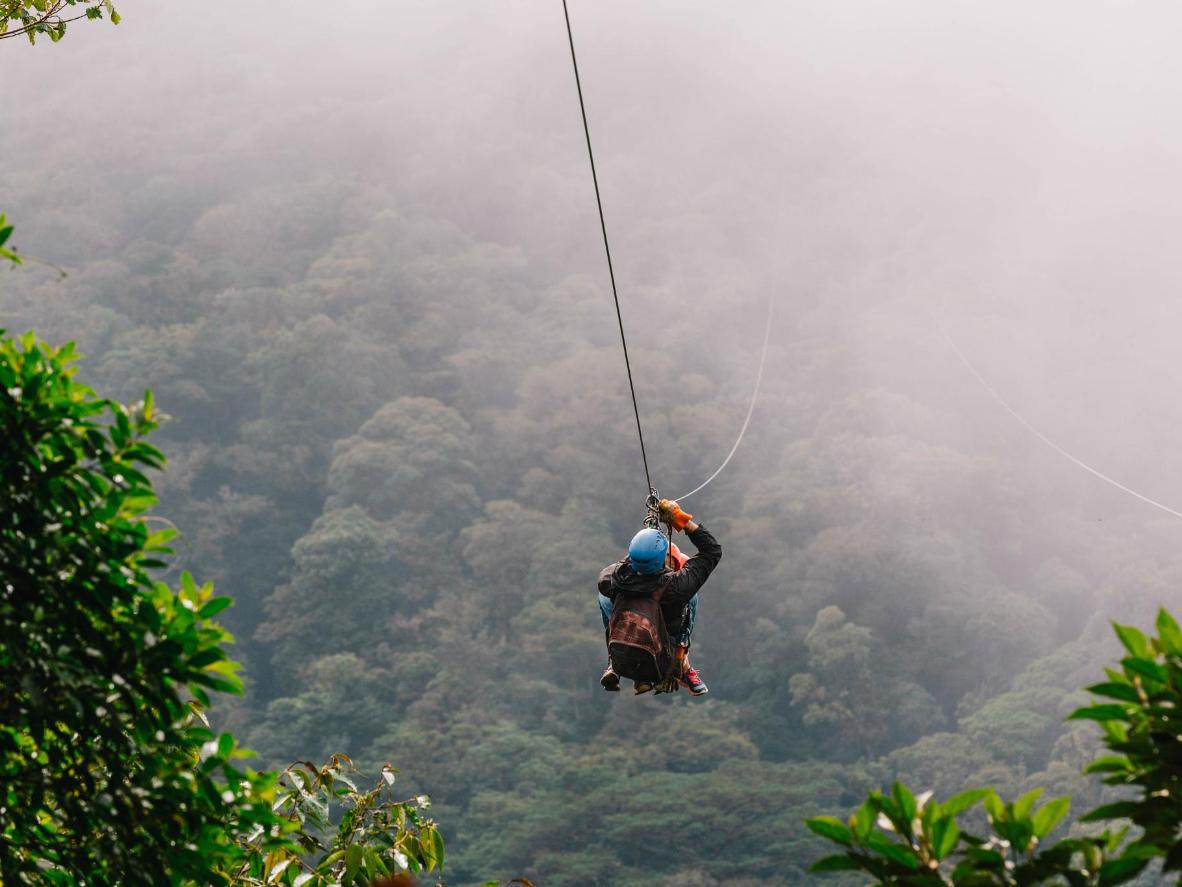
Ziplining in Costa Rica is an exhilarating and unforgettable experience, but it's important to be prepared before taking on this adventure. One important aspect to consider is the weight limit and restrictions for ziplining. In this section, we will discuss how to prepare for ziplining by checking the weight limit and any other restrictions that may apply. Additionally, we will cover the importance of wearing appropriate clothing and footwear for a safe and enjoyable ziplining experience. Lastly, we will emphasize the importance of listening to safety instructions and following all rules while ziplining.
1. Check the Weight Limit and Restrictions
To ensure a safe ziplining experience in Costa Rica, it is important to carefully review the weight limit and restrictions set by the zipline tour operator. Here are the steps to follow:
- Review the Weight Limit: Each zipline facility has its own specific weight limit, which is determined by factors such as the strength of the lines and harnesses. It is important to check the weight limit set by the company before embarking on the tour.
- Consider any Restrictions: Some zipline tours may have age restrictions or other requirements. Make sure to check if there are any restrictions that apply to you or your group before booking the tour.
- Contact the Tour Operator: It is recommended to reach out to the zipline tour operator directly to clarify any doubts or questions you may have about the weight limit and restrictions.
- Follow the Guidelines: For your safety and the smooth functioning of the tour, it is crucial to adhere to the weight limit and restrictions set by the zipline tour operator.
Fact: Ziplining is a popular adventure activity in Costa Rica, allowing visitors to experience the thrill of soaring through lush rainforests and taking in breathtaking views.
2. Wear Appropriate Clothing and Footwear
When ziplining in Costa Rica, it is important to dress appropriately and wear suitable footwear for both safety and comfort. Follow these steps to ensure a safe and enjoyable experience:
- Choose comfortable clothing that allows for freedom of movement.
- Select closed-toe shoes with a good grip to avoid slipping.
- Avoid wearing loose accessories such as scarves or jewelry that could potentially get caught in the zipline.
- Apply sunscreen and wear a hat to protect yourself from the sun's rays.
- Consider using insect repellent to keep any bugs in the rainforest at bay.
3. Listen to Safety Instructions and Follow Rules
To have a safe and enjoyable ziplining experience in Costa Rica, it is crucial to pay attention to safety instructions and follow the rules given by the zipline operators. Here are some steps to follow:
- Pay attention: Carefully listen to the safety briefing provided by the instructors before beginning the ziplining activity.
- Ask questions: If you have any doubts or concerns, do not hesitate to ask the instructors for clarification.
- Follow guidelines: Adhere to the safety guidelines given, including weight restrictions and proper use of equipment.
- Stay focused: Concentrate on the ziplining task and avoid distractions.
- Observe rules: Follow any specific rules set by the zipline operators, such as no loose items or excessive swinging.
By following these steps, you can ensure your safety and fully enjoy your ziplining adventure in Costa Rica.
Frequently Asked Questions
What is the weight limit for ziplining in Costa Rica?
The weight limit for ziplining in Costa Rica varies depending on the specific zipline tour and company. However, most companies have a weight limit between 250-300 pounds.
Are there any weight restrictions for ziplining in Costa Rica?
Yes, there are weight restrictions for ziplining in Costa Rica. This is due to safety reasons and to ensure the best experience for all zipliners.
What happens if I exceed the weight limit for ziplining in Costa Rica?
If you exceed the weight limit for ziplining in Costa Rica, you may not be able to participate in the activity. This is for your safety as well as the safety of other participants.
Can I go ziplining in Costa Rica if I am pregnant?
No, it is not recommended for pregnant women to go ziplining in Costa Rica. The physical demands and potential risks involved in ziplining may not be suitable for pregnant women.
Is there a weight limit for children to go ziplining in Costa Rica?
Yes, there is usually a weight limit for children to go ziplining in Costa Rica. It is important to check with the specific zipline tour and company for their age and weight restrictions for children.
What happens if I am unable to zipline due to weight restrictions?
If you are unable to zipline due to weight restrictions, the zipline tour company may offer alternative activities or a full or partial refund. It is best to check with the company's policies beforehand.



